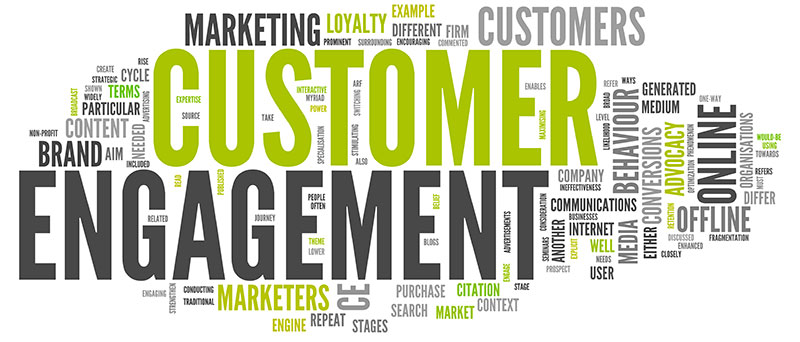A Crash Course on Inbound Marketing

By Podium.
How inbound marketing can help your small business and how to implement this strategy successfully.
When it comes to the roofing industry, marketing is essential to getting your business out there and getting leads. Podium knows that you want to maximize your marketing efforts, which means you need to understand the differences between inbound and outbound marketing techniques when it comes to reaching your target consumers.
When trying to target potential customers, not all marketing tactics are worth your time. These days, 87% of consumers begin their product searches online, where thousands of businesses are vying for their attention at once. By learning how inbound and outbound marketing differ, including how each draws in consumers, you can get better results faster and beat your competitors.
Inbound versus outbound marketing
Inbound and outbound marketing each have a place in a business’s marketing strategy. However, when it comes to getting the highest ROI and creating a lead-generating machine, one clearly takes the lead.
Outbound marketing, as the name suggests, occurs when a business blasts out a message to a mass audience. In this process, the company always makes the first move, trying to capture the consumer’s attention. You could describe an outbound strategy as a traditional marketing approach that seeks to “interrupt” consumers’ lives.
In order for outbound marketing to work, your audience must take their focus away from other activities and close in on what you’re saying. Common examples include TV ads, direct mail, email marketing, radio ads and cold calling, though outbound marketing can also include highly digital tactics like Spotify and YouTube ads.
Inbound marketing, on the other hand, allows your leads to start the conversation first. Instead of pushing unsolicited content on an audience, you give them content they’re actually looking for on the platforms they’re already on.
In this process, a lead may stumble upon entertaining content on social media or an article that answers their question on Google. Or they may perform an internet search for “tire shops near me” and see your business first in their results. With inbound marketing, you can draw in leads who are already interested in services/products like yours with simple methods such as keyword optimization, guest blog posts and review management. In this way, ready customers can find you quickly and are pulled into your sales funnel in a more natural way.
Many inbound marketing plans focus on search engine optimization (SEO), content marketing and social media to attract new leads. While this type of marketing takes a bit of time and strategy, it’s certainly worth the effort.
Three benefits of inbound marketing
As consumers get smarter about avoiding pushy outbound marketing — even using digital tools like AdBlock and spam filters — inbound marketing is becoming central to many modern marketing plans. Here are three specific reasons why inbound marketing works best for many businesses:
1 - It’s cost-effective
Whereas outbound tactics are sent to a mass audience, leading to relatively high costs for a small percentage of successful leads, inbound marketing allows you to get highly specific with your targeting — taking advantage of data such as buying habits and browsing history. With inbound tactics, your marketing is built to reach the consumers who are looking for you (or for the products and services you sell). As a result, inbound marketing delivers a higher ROI than other strategies. In the long run, inbound marketing is 62% less expensive compared to outbound marketing, with significantly less cost per lead.
It’s easy to save when you’re no longer spending on a large group that may not even be interested in what you have to offer. Instead, you’re creating relevant content viewed primarily by your target audience, naturally increasing your conversion rate.
2 - It’s highly measurable
Inbound marketing primarily relies on digital channels, which means you have access to a broad spectrum of data for targeting and understanding your audience. Because of this, you have an easier time figuring out how your leads are finding you and what they do once they land on your site. This helps you figure out where changes are needed, allowing you to boost your lead generation quickly.
3 - It builds relationships
One of the biggest differences when comparing inbound versus outbound marketing is the amount of communication that occurs between the business and the customer. With outbound marketing, you tend to focus on showing and telling a consumer what to think. For example, an email blast is usually built to attract, pitch and directly connect them to a given page instead of engaging them in conversation.
An inbound marketing strategy, on the other hand, caters to your customers’ needs instead of centering on your product or service. After giving consumers the content they are looking for, your company continues to support them throughout the buyer’s journey by leading them to a real conversation. For example, you may have a Facebook chat available for social media followers or Podium Webchat installed on your web pages to capture qualified leads you can text.
By focusing on the customer and creating two-way conversations, your company feels more real, more genuine, and — most importantly — more trustworthy.
Three things good inbound marketers should do
While inbound tactics like SEO and content marketing can and should be a large part of your inbound marketing strategy, they’re just the start for a sustainable marketing model. The end goal of your inbound marketing should be to maintain a growing customer base in the long run. Here are three things that a complete inbound marketing campaign should accomplish:
1 - Attract customers
The first step to growth is to make your potential customers aware of your business. While outbound marketing can also come in handy for this step, awareness and attraction are key parts of any inbound marketing campaign.
With this step, you may optimize your website with keyword-rich web pages or perhaps blog about topics your target audience is reading up on. The goal of this step is to get in front of consumers when relevant, where relevant, to pique their interest.
2 - Convert leads
After you’ve successfully caught a customer’s eye, you want to make sure they don’t slip away. Though inbound tactics like whitepapers and blog posts aren’t sales pitches in themselves, they should include calls to action that tell your consumer what to do next.
Within this step, consumers should always have the opportunity to ask more questions through contact forms, chat options or other digital tools that allow them to leave their information behind. In return, you should be available to answer on a timely basis. Once a consumer has all the information they need to make a buying decision, you can close the sale.
3 - Keep customers happy
Whether you’re following an inbound or outbound strategy, your marketing efforts should never leave your current customers behind. Keeping your retention rate high can help you save on customer acquisition and make more money per customer. Your inbound marketing plan should include plenty of digital content — for example, a blog post with tips on how to make the most out of the product a customer just purchased — that works to constantly reengage your customers with your brand.
As you increase customer loyalty, you won’t have to work twice as hard for your customer base to continue to grow. Your customers will naturally stick with you because the value that you provide is just as good as what attracted them to you in the first place.
Three inbound marketing strategies that win
Now that we’ve covered how inbound marketing benefits your business and what the right marketing campaign should do, let’s discuss three inbound marketing strategies that drive success consistently.
Because there are many different strategies, and all require significant effort and investment, businesses should experiment to find what works best for their specific needs and customer base. However, the ideas below are proven, basic methods any business can employ to begin inbound marketing successfully.
1 - Gather reviews
Because the modern customer journey begins online, today’s customers often perform research before engaging with a business or making a purchase. And where do they often turn first? Reviews.
Online reviews are the frontier of effective inbound marketing. Reviews influence 88% of consumers in discovering a local business. They’re 7.4x more likely to be an important factor in choosing a local business than traditional marketing. If you want to show up when leads search for you and pull them in, you need to consistently gather hundreds of authentic, high-quality reviews. How can you do this? Through text.
After switching to text to collect reviews, Paul’s Pest Control jumped half a star on Google within 24 hours and gathered more reviews in one month than they had in five years.
2 - Optimize your website
Another key inbound marketing strategy is optimizing your website to convert and top search results. This includes factors such as backlinks, effective page flow, high-quality images and videos and responsiveness. How responsive your site is — whether it transitions easily to mobile interfaces and back — is not only important to building a quality site, but is a major Google ranking factor.
Your website should be full of valuable content that capitalizes on keywords that leads in your industry would be searching for. It should also be fast — each page should be technically optimized so that it will load as quickly as possible. Take stock of images and videos to ensure that they are optimized and not slowing your customers down.
3 - Improve your customer experience
Consistently offering an outstanding customer experience not only draws leads, but keeps them coming back. A major part of this is optimizing the way you engage in conversation with new leads and customers alike.
65.6% of consumers think that texting makes working with a local business more convenient. When conversing with leads and customers, you should always give them the option to text you. You can do this by making your landline textable and by implementing a Webchat on your website.
Live chat is a feature that 41% of customers expect to see when they land on your website, and this kind of convenience pays. A recent survey reported that live chat leads to a 40% increase in conversion rate. And with a live chat feature that can seamlessly move from desktop to mobile interfaces and back, like Webchat, this percentage increases.
Choosing the right marketing tactics
When comparing inbound versus outbound marketing in the digital age, there’s a clear winner that provides the most efficient results. Consumers have more power than ever to block outbound ads they don’t want to see, which means inbound marketing content is the smart way to get your brand noticed and appreciated all at once. As the right consumers enter your sales funnel, they’ll receive more value from your inbound tactics than they would from any TV ad, no matter how expensive.
Podium empowers 100,000+ local businesses to dominate inbound marketing by collecting thousands of reviews, converting leads with Webchat, and delivering the ultimate customer experience through text. See how Podium can transform the way you do business by watching this demo.
Learn more about Podium in their RoofersCoffeeShop® Directory or visit podium.com.
Original article source: Podium






















Comments
Leave a Reply
Have an account? Login to leave a comment!
Sign In